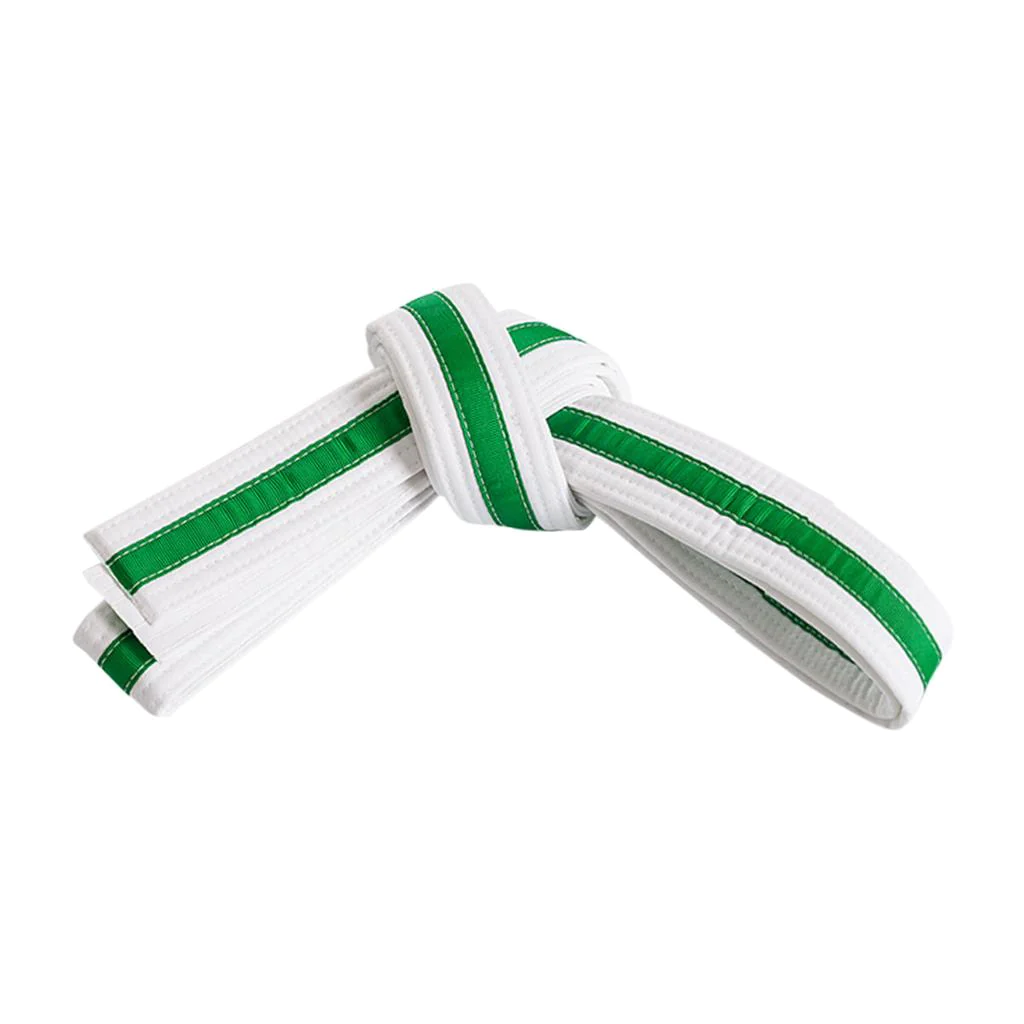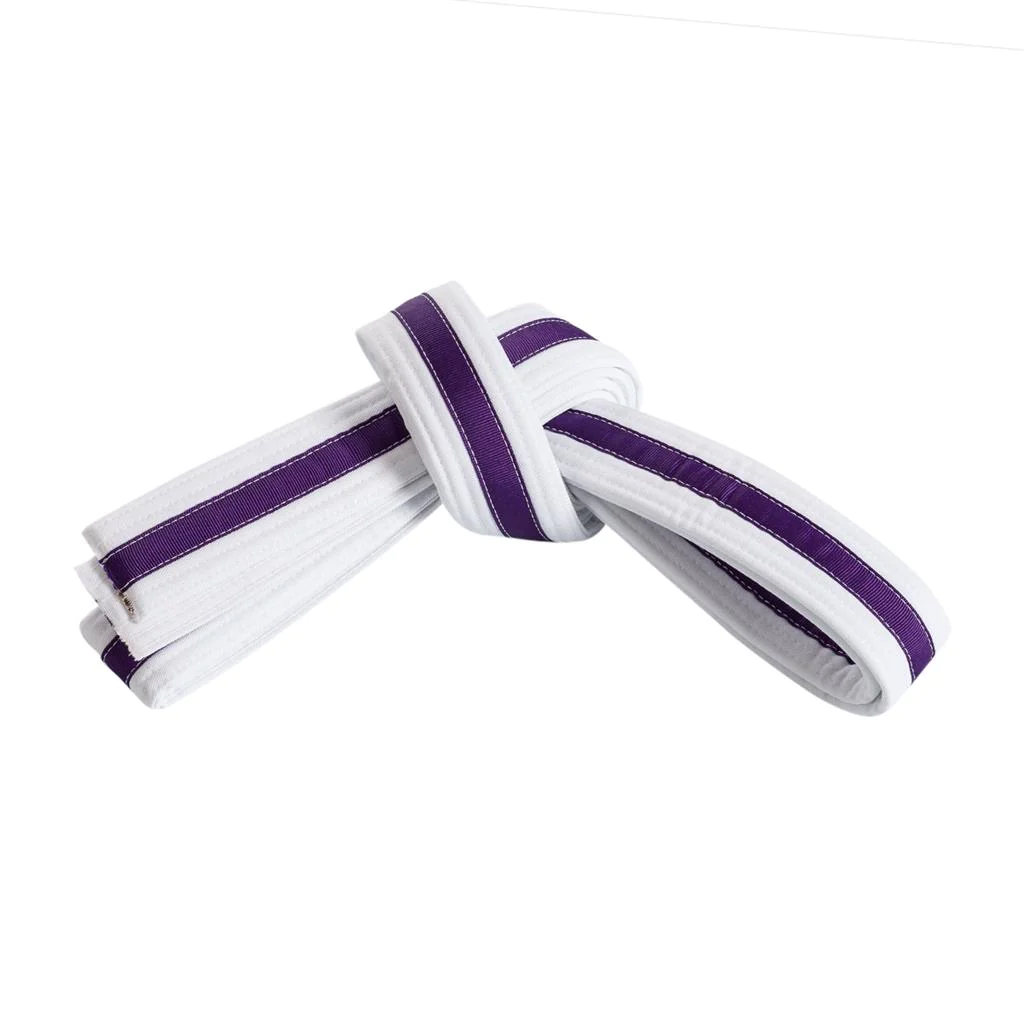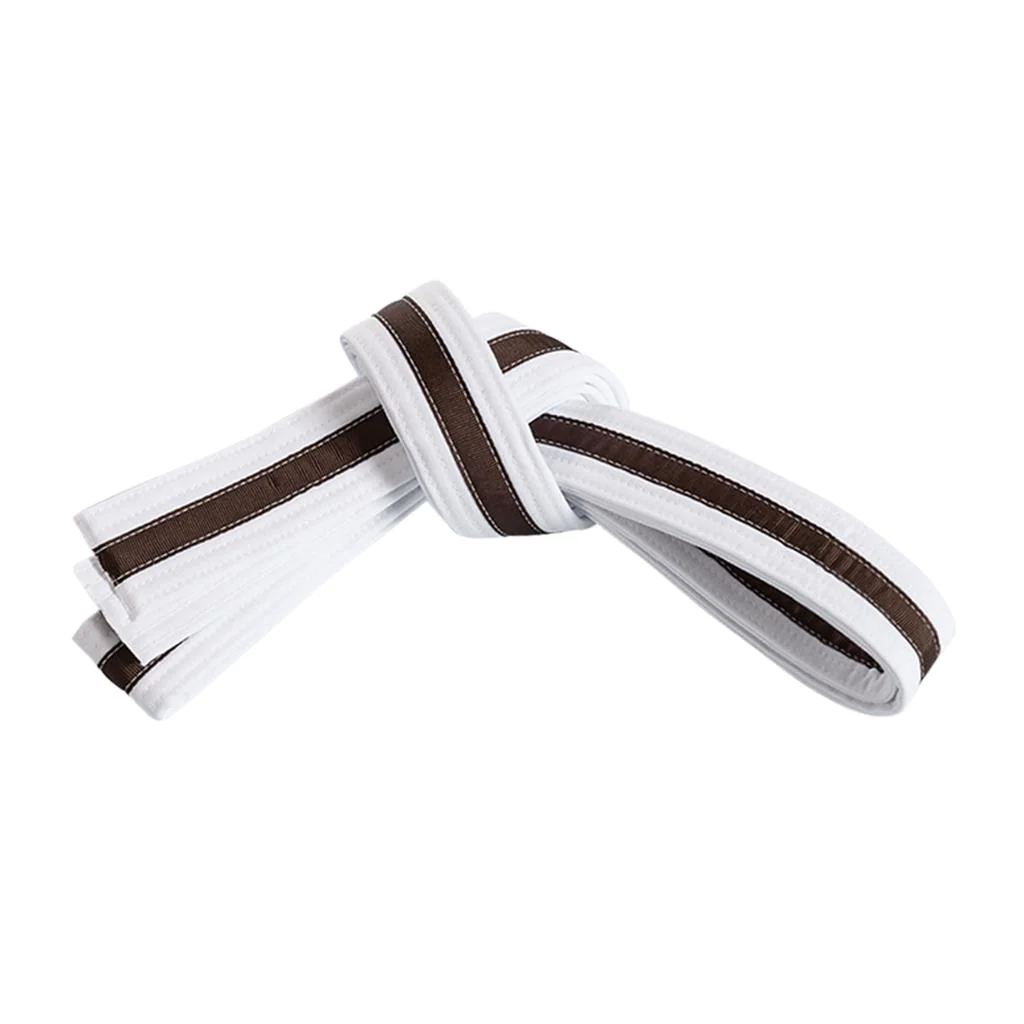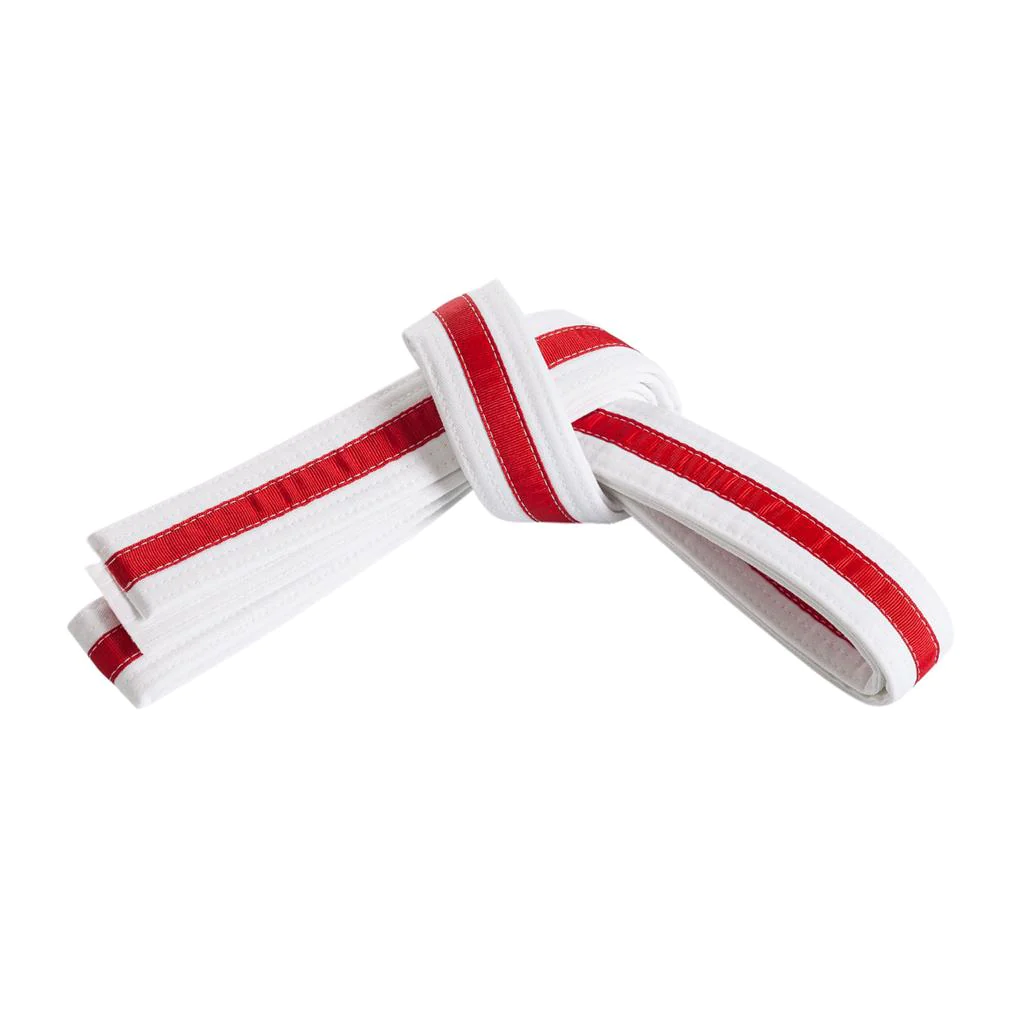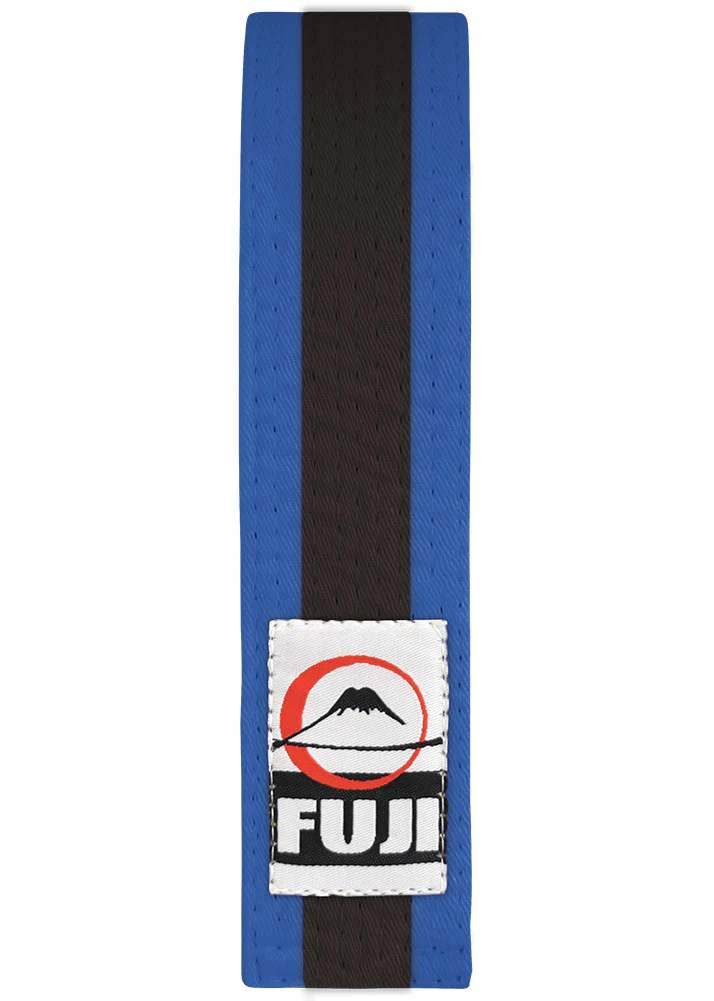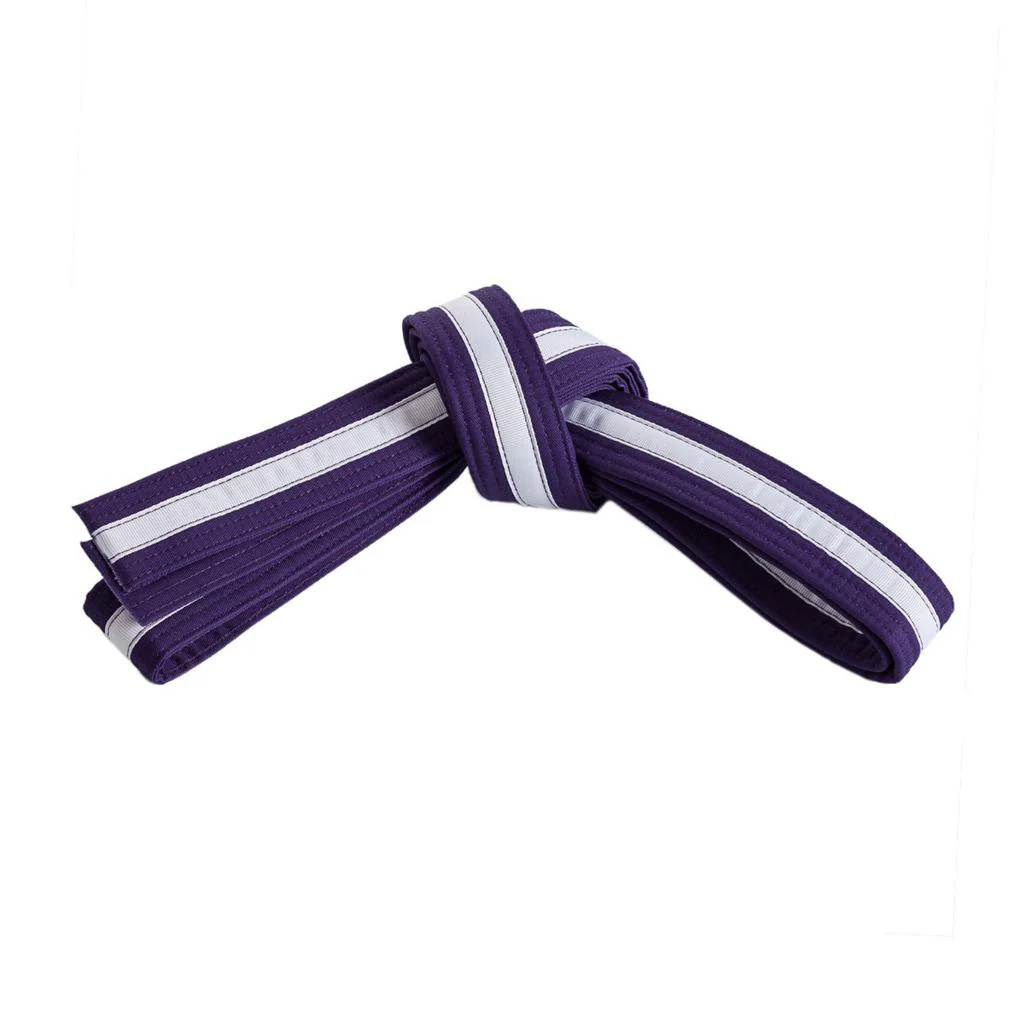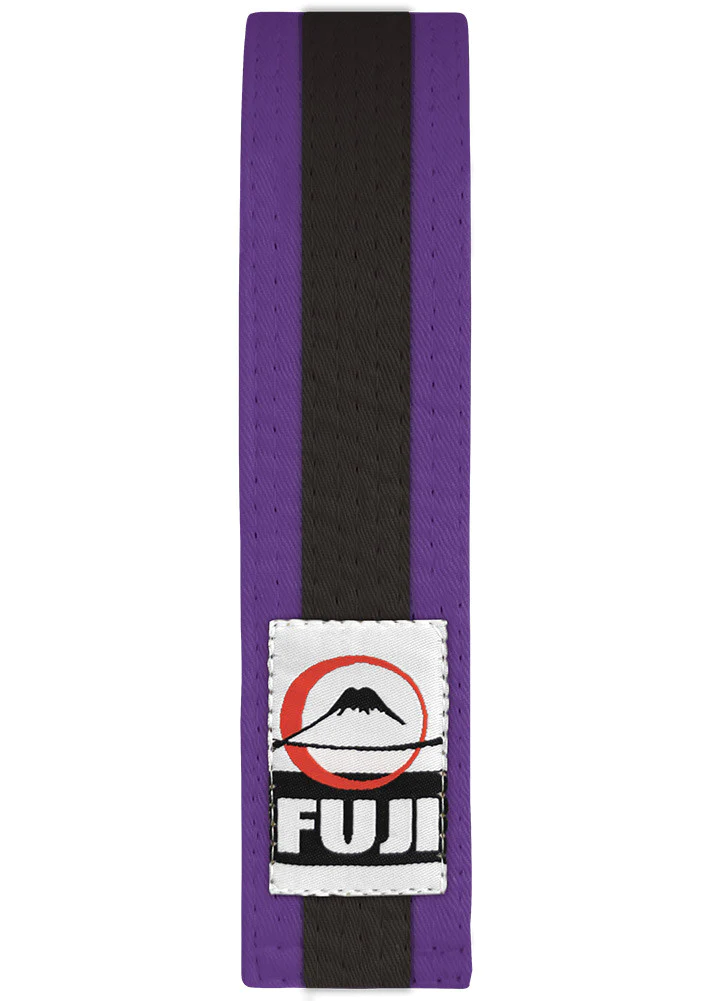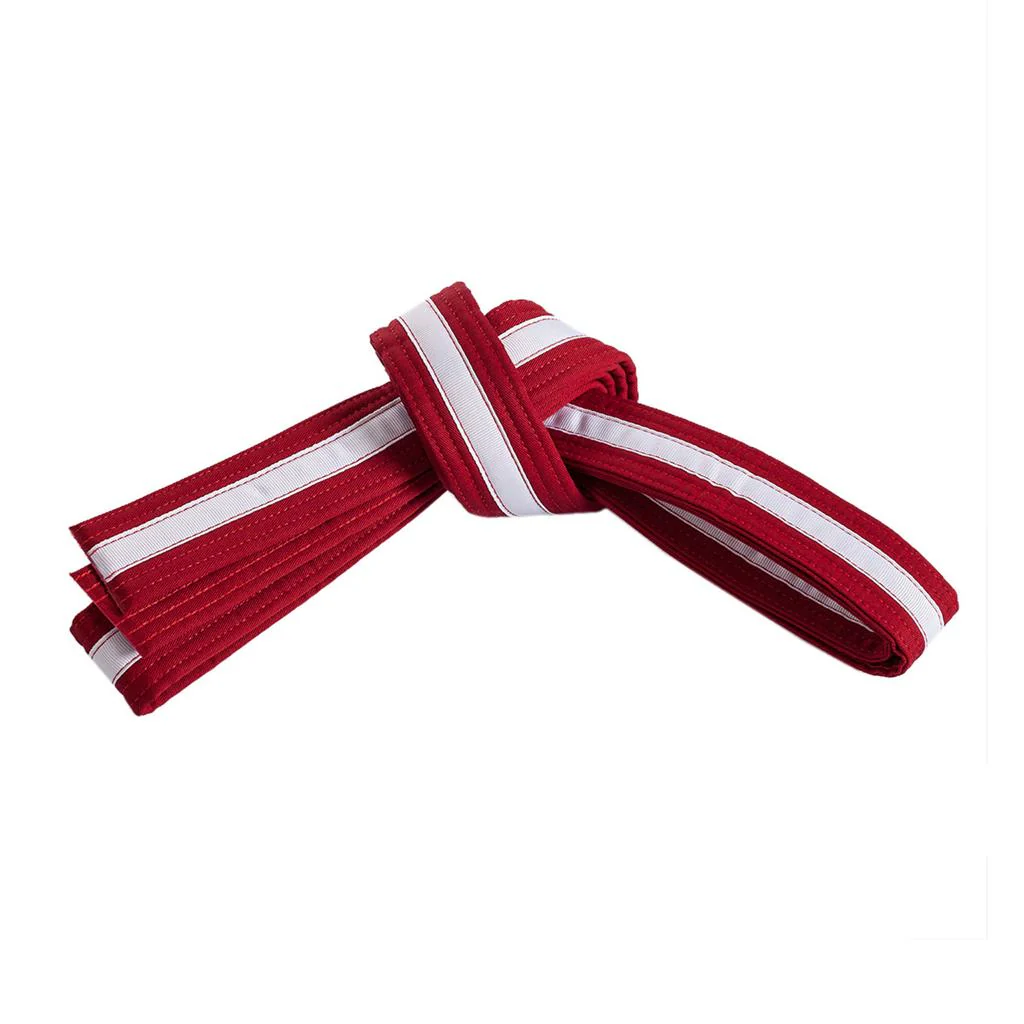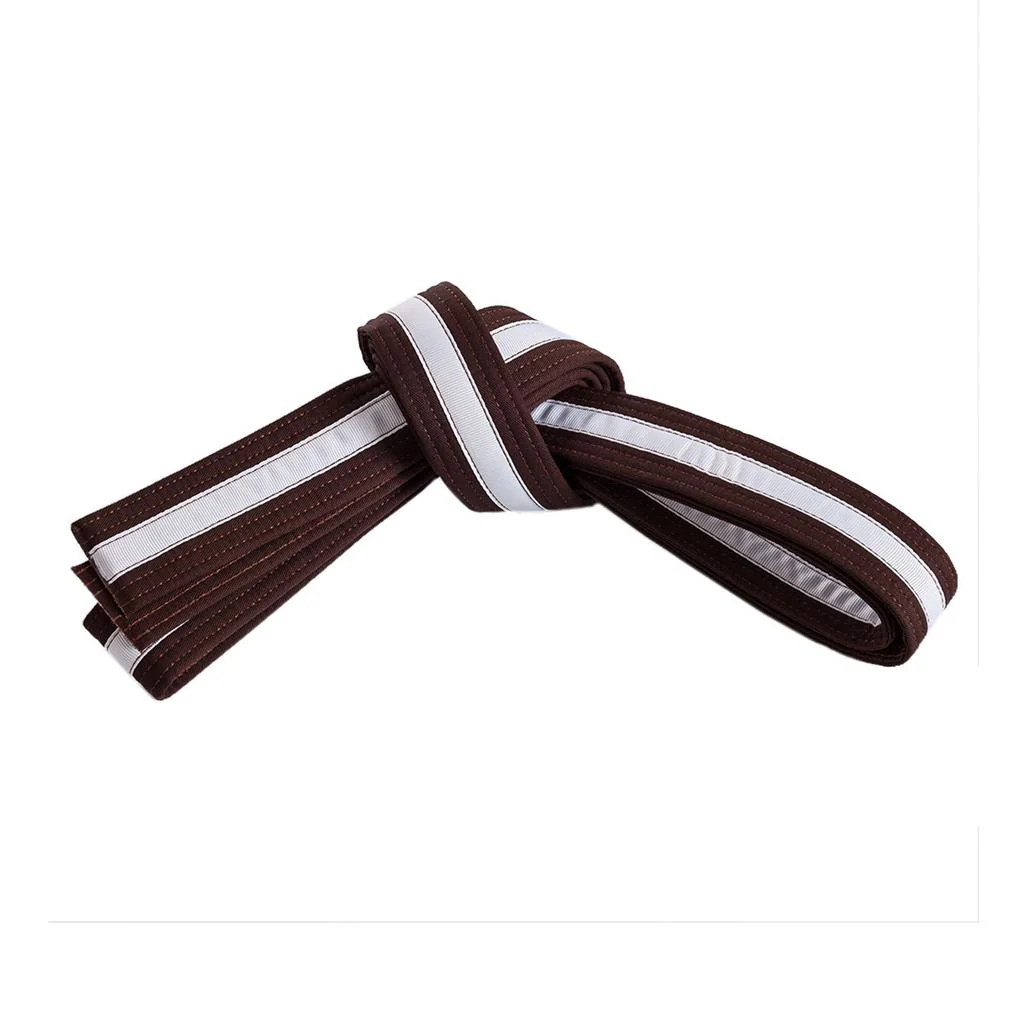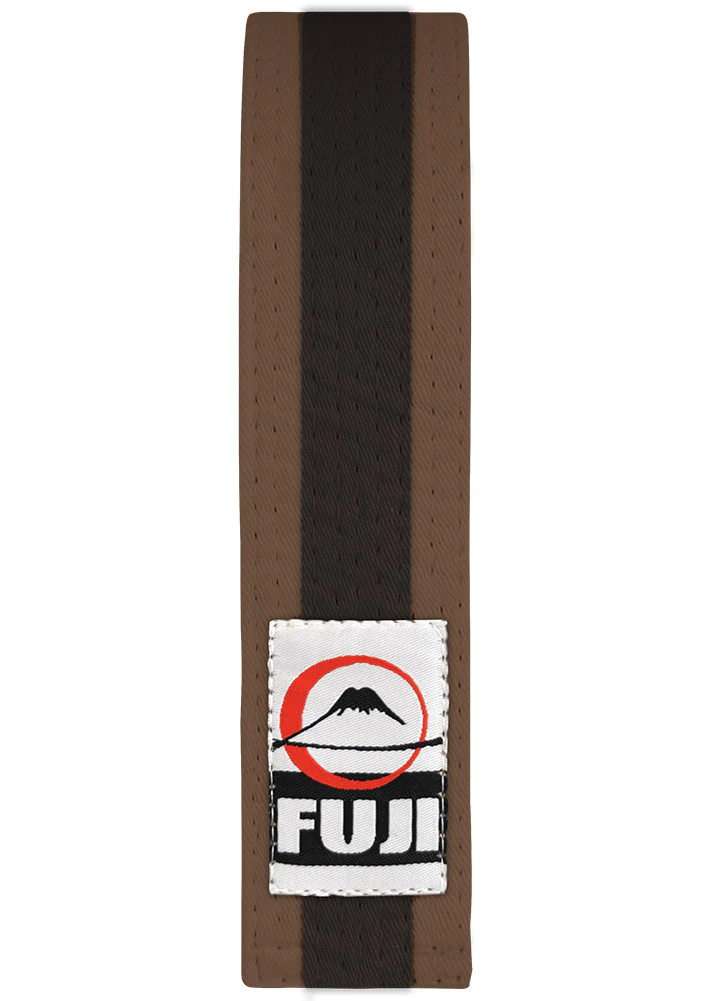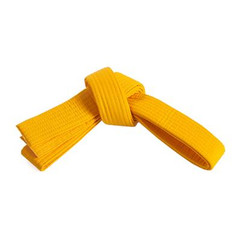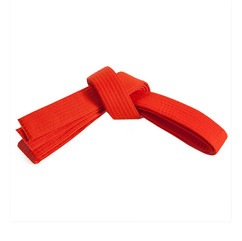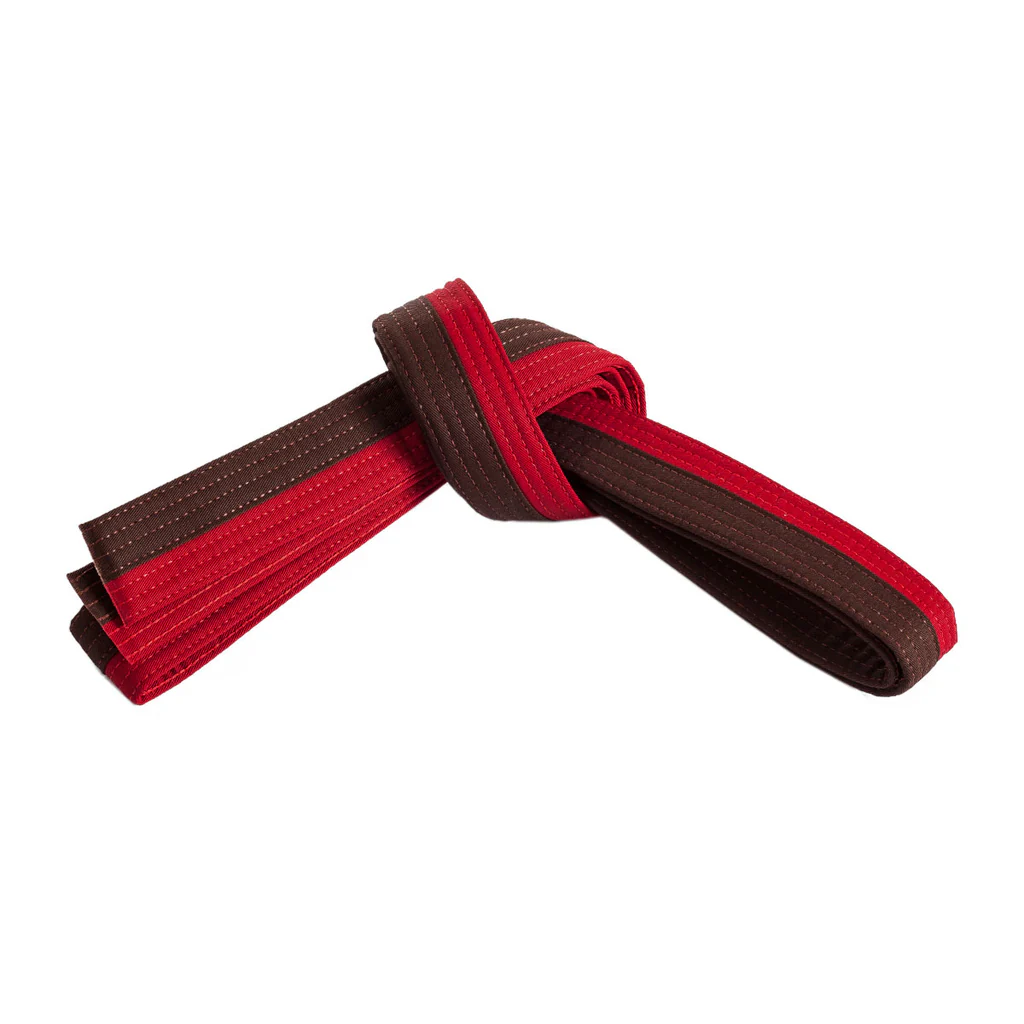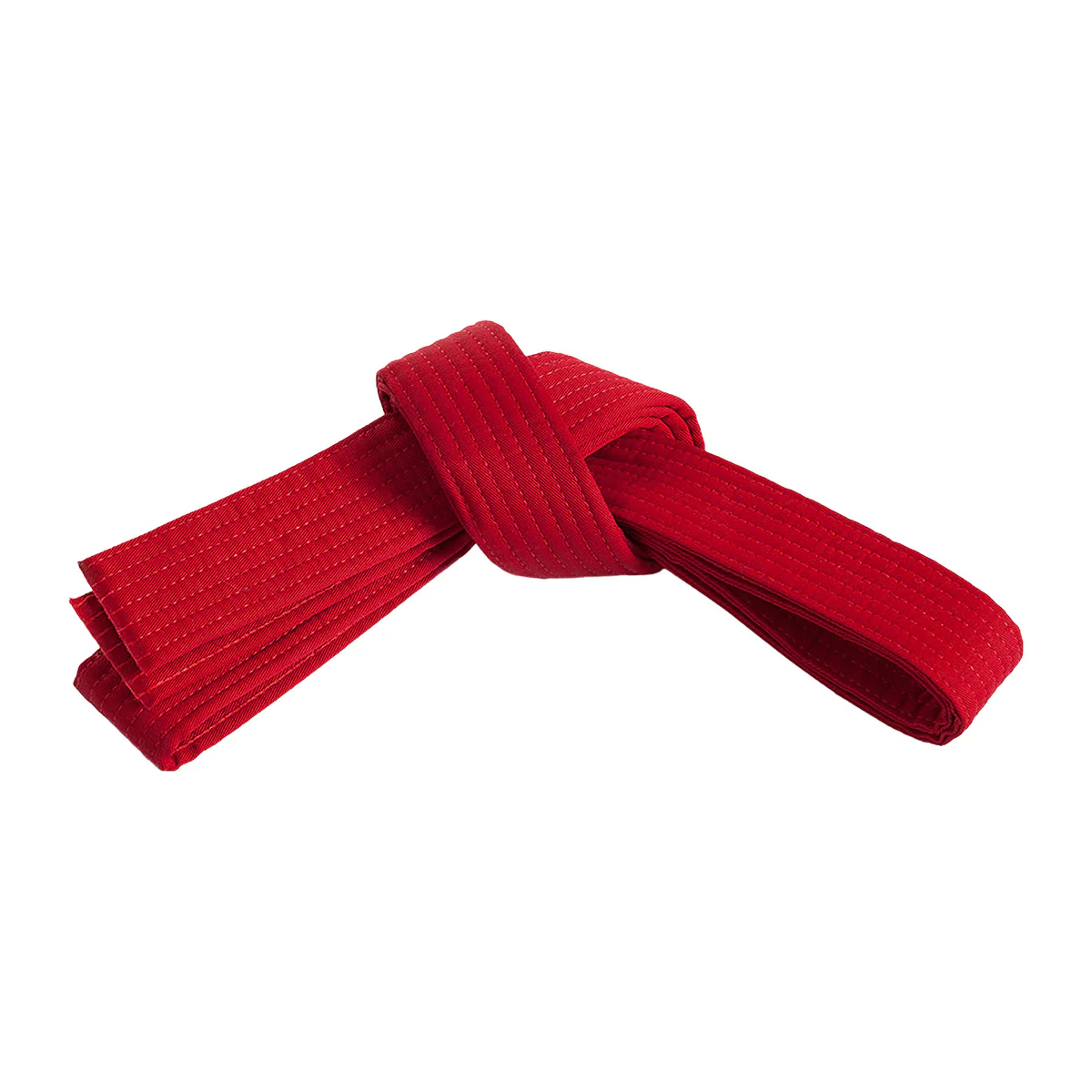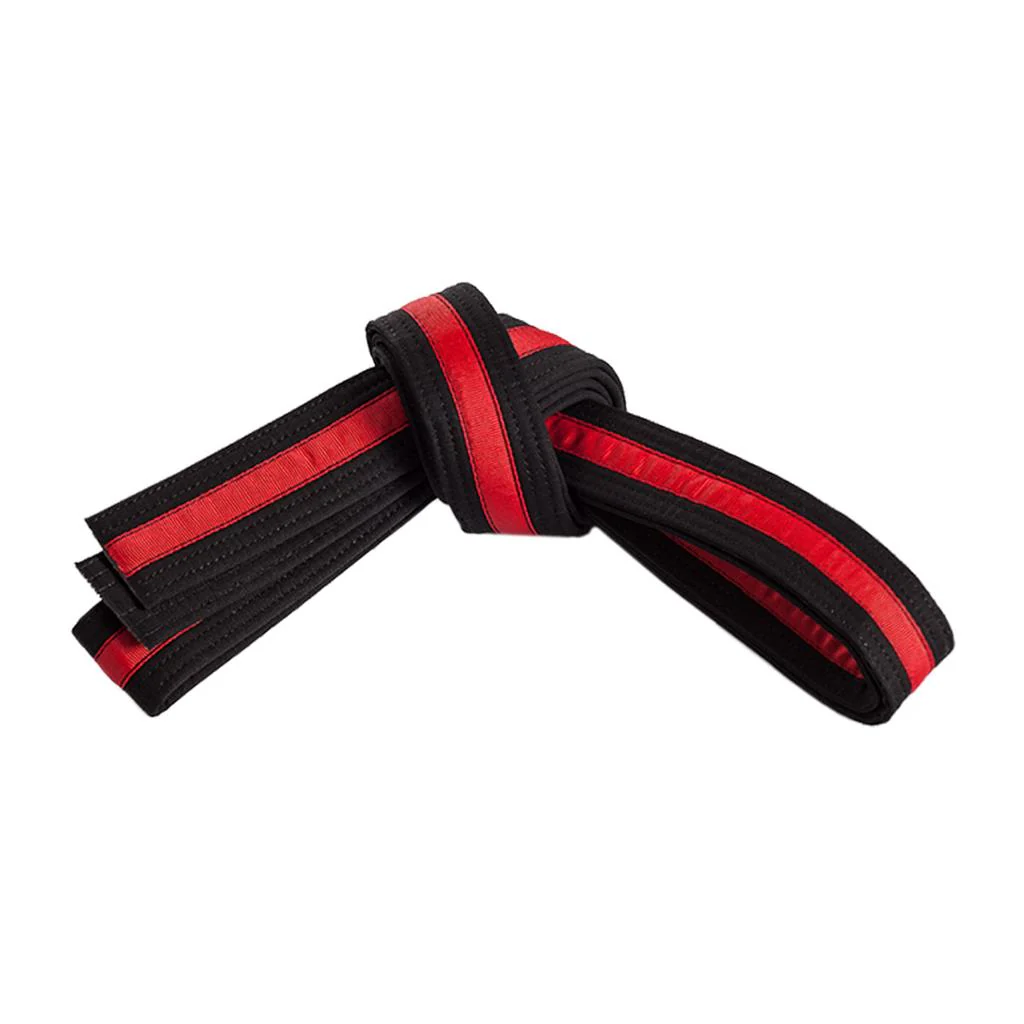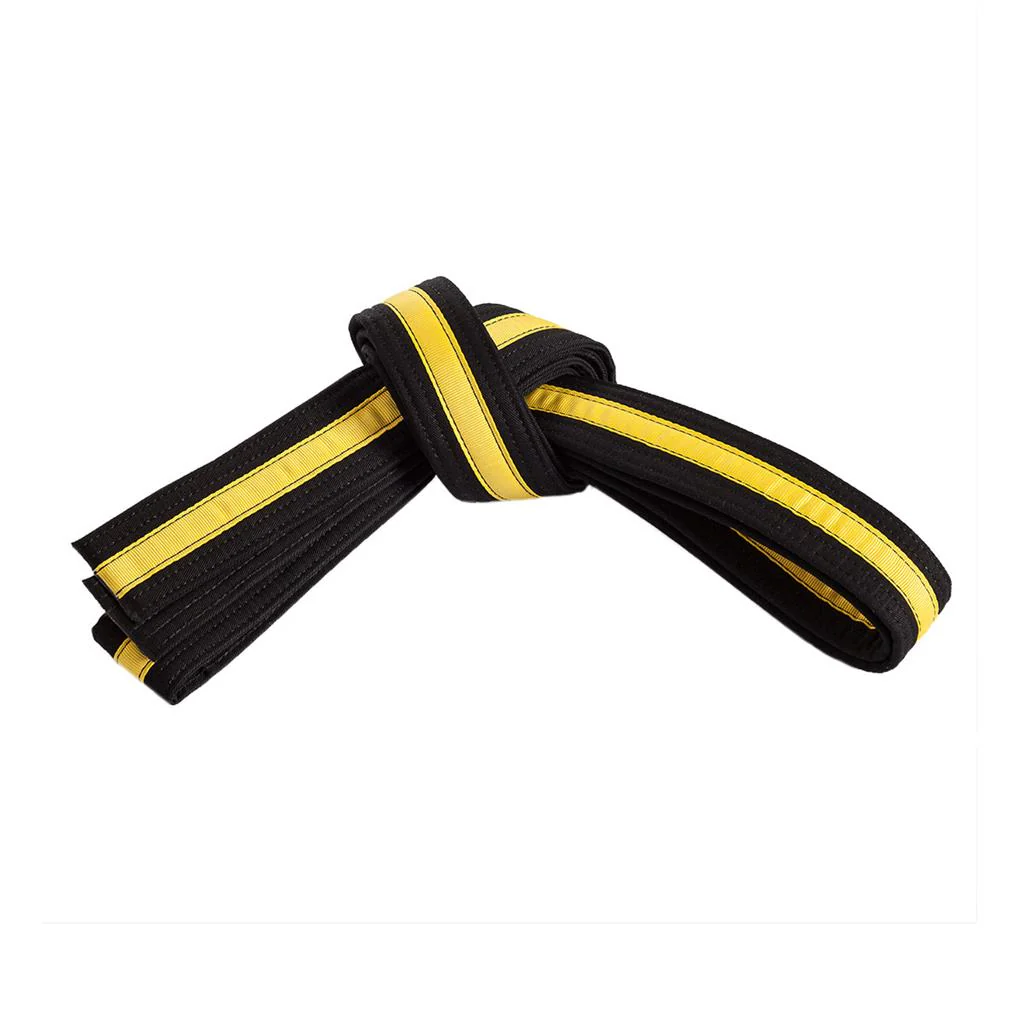A Mega Guide to Belts: 2025 Update
- Kate Cowan
- Jun 22, 2023
- 12 min read
Updated: Oct 1, 2025
2025 Update Preface:
This year, for the first time ever, our belt ranking system will be changing. This change will effect kids and teens, NOT adults.
Don't worry: your child is not going to be demoted. They won't stop learning or be downgraded. Some colours may be different when they do their next grading, but this new system means they will learn more, not less.
I know, I know - why fix it if it's not broken?
Well, in short, it kind of is broken.
When I see a flaw in a system, I like to address that flaw and make the system work better for everyone involved. And what is that flaw, you may ask? Mainly, I'm seeing kids approach their Black Belt grading, or enter into the adults class at age 13 or 14, totally and utterly unprepared for all of the things they need to know to pass. And that's not fair on anybody.
The children's system is flawed, so this update is going to be geared totally toward preparing kids to grade, fully prepared, for their black belt - without the last minute stress and struggle of learning 20 things that were never required for them to know in the old belt system.
Read on (below) to see what the differences will be.
Original Preface:
In this mega-sized article, I'm going to be detailing our classes' different belt systems, the names of each belt, the requirements to attain each belt, and the general amount of time it should take to reach each new belt.
Which belt will your child get upon aging into an older class group?
But my child has reached the minimum attendance requirement! Why hasn't she graded yet??
How long until I get my black belt?
How old do I have to be before I get my black belt??
Answers to all of your most burning questions can be found at the bottom of the article, past all of the image galleries.

When Will I Grade?
Let's be clear: it's not acceptable to demand gradings from your Sensei, and this goes for students and their parents. We know what you should be learning, we know your skill, and we know what you need to improve on. So if you haven't graded in a while, there's probably a reason for that.
Do this:
Instead of "When am I grading, Sensei?" try this: "Sensei, what can I do to improve?"
Minimum Requirements
I talk about minimum requirements a lot. But what does that mean?
Students need 3 things before they can grade up.
Minimum attendance
Appropriate Knowledge/Techniques
Good behaviour
And the goalposts for these minimums get harder to achieve as their belts get higher in rank. A 12 year old brown belt's behaviour must far surpass a 4 year old yellow belt. Same goes for technique and knowledge.
Attendance:
For example: if the minimum attendance to achieve a belt is 3 months or 24 classes, your child will not be considered for a grading at all until they hit that minimum mark. There are also variables: a child who comes to class every night will probably get 48 classes within those 3 months. She has hit her minimum. A child who comes once a week will only get 16: he hasn't hit his minimum yet, even though it's been 3 months.
If your child's minimum is 3 months, and they've gotten their 24 classes, but it's been five months (maybe you missed a grading, maybe there wasn't one on the schedule), that's okay.
What do you do? Just wait. Because karate isn't about the goal alone. It's about the journey, learning to wait, and having patience. (This is a very Japanese practice).
Everything in this world is about instant gratification these days. If done right, this process teaches about patience, perseverance and goal setting.
I could hand a 7 year old a black belt today: did he earn it? No. So let the time pass, and don't worry about the end goal so much.
Enjoy the process.
Knowledge and Technique
For every belt, there is a level of technique and/or kata that is required to pass your grading. As well as attendance, you need to know your actual karate. If your minimums are Saifa and six months of attendance, you need both of those things. You cannot grade if you don't know Saifa, even if it's been 8 months or more.
Behaviour
This is one is self explanatory. Good, appropriate behaviour, a respectful attitude, and the ability to practice good manners at all times, at an age-appropriate level of course, are expected of our students.
The Belts
*Note: some of these ages are changing, If your 6 year old is already in Dragon belts, don't worry: nothing will change for them.
Kids Age 4-6
Regardless of class placement, kids aged 4, 5 and 6 will grade to "Ninja Belts": white belts with coloured stripes down the middle, and are achieved in the following order:
Yellow: Bumble Bee
Orange: Chipmunk
Green: Grasshopper
Blue: Dolphin
Purple: Frog
Red: Panda Brown: Bear
Belt Requirements:
Each of these belts takes about 3 months to achieve, depending on attendance, behaviour, and when we have a grading scheduled.
Aging Up
If your child has any Little Ninjas belt, good news: they will not have to go back to white belt upon joining the older class group! Ninjas turning 6 and joining the older group will keep their Ninja belt until they are invited to a grading, a sort of test, to achieve their Yellow Tiger belt in Little Dragons.
Ninja Belts;
Ages 7-9
Kids Ages 7, 8, 9 (roughly) will grade to "Dragons Belts". *Note: like Ninjas belts, if your 9 year old is already in the Youth belts, regardless of class placement, they will continue earning Youth belts.
"Little Dragon" belts are coloured belts with stripes down the middle: either white or black.
Belt Requirements:
Unlike solid 'adult' level belts, which are started around age 9, Dragon belts do not require kata or advanced knowledge. Instead, we focus on building blocks of listening, focus, behaviour, manners, and karate technique. With each level of belt achieved, the student is held to a higher standard of behaviour and technique. With an average attendance of 2 nights per week, a yellow belt can expect roughly 3 months between grading, and time between tests gets slightly longer as your belt colour gets higher in rank.
Aging Up:
When your child turns 9 and ages up into the youth class, he or she will keep their Little Dragon striped belt until such time as they have learned the required kata and knowledge to test into the youth and adult belt system (Also called the Kyu Belts). Depending on the age, skill level, and your Sensei's judgement, upon your next grading after joining the youth class, you may test to solid yellow, orange, or even green belt.
Little Dragon belts by name:
Yellow/black: Tiger
Orange/black: Lion
Green/black: Turtle
Blue/black: Shark
Purple/White: Purple Dragon 1
Purple/Black: Purple Dragon 2
Red/White: Red Dragon 1
Red/Black: Red Dragon 2
Brown/White: Brown Dragon 1
Brown/Black: Brown Dragon 2
You may notice the elimination of "Golden Dragon". This is for one main reason: it was too often mistaken as a 'black belt'. Now, Brown Dragon 2 is the highest dragon belt in the Dragons system.
Dragons Belts:
Ages 10 - 17: Youth Belts
2025 Update: as I mentioned at the top, our new Youth Belt system for kids and teens will be put in place with the idea of structuring requirements for black belt into the kyu belt system. These changes will not affect the adults grading system, which will remain the same.
What is KYU?
Kyu, pronounced like this, is a Japanese word meaning "rank", "class", or "level". These are the numbered and official adult belt ranks used across the world for TOGKF students usually aged 9+, though the ages for Kyu belts vary depending on the dojo and country.
Aging Up:
If your child is aged 9-12 and ages up into the adult class, he will keep his belt and continue within the Youth class system below. However, in our adult class, we have two distinct lines: the adult line of white through black belts will stand in front of the teen's line of white through black belts. Meaning: a 13-year-old brown belt will stand behind an adult white belt. This is a very Japanese way of respecting the age of the senior students.
Upon turning 18 they will take their place in the adult line appropriate to their rank.
Please note: colours may change, even if rank level remains the same. This is often due to what belts go in and out of stock. But this should be the general idea of colours.
Belts:
White
Yellow/White (10th Kyu)
Yellow (9th Kyu)
Orange (8th Kyu)
Green (7th)
Blue (6th)
Blue/Purple (5th)
Purple (4th)
Purple/Brown (3rd)
Brown (2nd)
Red/Brown (1st)
Red (Kakyu 1)
Red Stripe (Kakyu 2)
Brown Stripe (Kakyu 3)
Gold Stripe (Kakyu 4)
10th Kyu (Yellow/White Belt)
When you get this belt, you learn: Basic techniques.
Minimum Time: Three months or 16 classes. Please note this is the MINIMUM time, not maximum.
9th Kyu (Yellow Belt)
When you get this belt, you learn: Gekisai Dai Ichi
MinimumTime: Three months or 16 classes. Please note this is the MINIMUM time, not maximum.
8th Kyu (Orange Belt)
When you get this belt, you learn: Gekisai Dai Ni
MinimumTime: Three-4 months
7th Kyu (Green Belt)
When you get this belt, you learn: Saifa
MinimumTime: 4-5 months
6th Kyu (Blue Belt)
When you get this belt, you learn: to perfect previous katas to a higher level.
MinimumTime: 4-5 months
5th Kyu (Blue/Purple Belt)
When you get this belt, you learn: Half Seiyunchin
MinimumTime: 4-5 months
4th Kyu (Purple Belt)
When you get this belt, you learn: Full Seiyunchin
MinimumTime: 4-5 months
3rd Kyu (Purple/Brown belt)
When you get this belt, you learn: Full Seiyunchin
MinimumTime: 6 months
2nd Kyu (Brown Belt)
When you get this belt, you learn: Shisochin
Minimum Time: 6-8 months
1st Kyu (Red/Brown Belt)
When you get this belt, you learn: Perfected Shisochin + Gekisai Dai 1 and 2 Bunkai
MinimumTime: 6-8 months
Kakyu Ichi (Red Belt)
When you get this belt, you learn: Tensho + Saifa Bunkai
MinimumTime: 6-8 months
Kakyu Ni (Red Stripe)
When you get this belt, you learn: Sanchin, Rensoku
MinimumTime: 8+ months
Kakyu San (Brown Stripe)
When you get this belt, you learn: 6 Seiyunchin Bunkai
MinimumTime: 8+ months
Kakyu Yon (Gold Stripe)
The highest jr. rank.
When you get this belt, you learn: All Seiyunchin Bunkai, Sanchin, tensho, and previous requirements.
MinimumTime: 8+ months
Black Belts
Congrats! You're ready to grade for black belt! Amazing.
While a true "Shodan" black belt is an internationally recognized rank, and can only be achieved by a student aged 18+, we are aware that some kids train from the time they are small, and may hit all of the milestones for black belt prior to age 18. Read on for info on that.
Here is a list of all the black belts someone may achieve.
Please keep in mind: the look of these belts may change depending on what is available from our suppliers. No matter what your belt looks like, your rank will be the same.
Jr Black Belts
While our system works hard to be sure that kids can achieve adult shodan with all the tools they need for that, a few high-achievers will always make it through the ranks quicker than others. Kids ready for their Jr. Black belts probably:
Started training very young (4-7 years old)
Attend multiple times per week (3-4 times)
Have never taken any extended long breaks (summers off, etc).
Instead of Jr. Black belts (for most kids), the Kakyu ranks listed above (like "red stripe) will now be in effect. For those exceptions who train almost daily, Jr. Shodan, AKA Shodan-Ho, will be a black belt with a thick white tape on the end.
Minimum age: will be discussed with Sensei at an individual level.
Shodan Ho 1: Age 14
Shodan Ho 2: Age 16
Shodan, Adult International: Age 18
Adult Kyu Belts
For adults aged 18+, no need to worry about changes. Our belts will remain the same:
White
Yellow/White (10th Kyu)
Yellow (9th Kyu)
Orange (8th Kyu)
Green (7th Kyu)
Blue (6th Kyu)
Purple (5th Kyu)
Purple/Brown (4th Kyu)
Brown (3rd Kyu)
Brown/Black (tape) (2nd Kyu)
Brown/Black (1st Kyu)
Black (Shodan)
The 10 Adult Black Belts: Dan ranks.

Did you know: there are ten levels of black belt in our style of karate?
Ten!! They are: Shodan, Nidan, Sandan, Yondan, Godan, Rokudan, Nanadan, Hachidan, Kyudan and Judan. Also called: 1st Dan, 2nd Dan, 3rd Dan, 4th Dan, 5th Dan, 6th Dan, 7th Dan, 8th Dan, 9th Dan and 10th Dan.
Most Dan ranks have a kata and bunkai requirement. Each levels time requirement is as follows: it takes *minimum* 1 year to achieve 1st degree black belt. 2 years to achieve 2nd degree black. 3 years to achieve 3rd degree. And so on.
Our dojo is part of the TOGKF, the leading international Goju Ryu karate organization with the deepest and most direct roots to Okinawa, the birthplace of karate.
Because of this, our black belts of all levels are recognized internationally by all TOGKF dojos.
Keep in mind: once black belt is achieved, there is a general idea of a 'time requirement" to test to the next level. However, this can change from person to person, and the time limit is a very loose guideline. Each person is unique, and will be ready for the next level when Sensei says so.
Further Training
Many people say that black belt is only the beginning of real training, and I agree. There are 10 total ranks of black belt in Goju Ryu karate, with 10th degree requiring a minimum age of 70 years old.
Q and A
Q: Why so many belt systems?
A: There are multiple belt systems for many reasons. For one: a 4-year-old, an 8-year-old, a 12-year-old and an adult cannot be held to the same standard. If we were to administer the same test to each age group, the 4 and 8-year-old would almost certainly fail. Due to this, we deliver age-appropriate teachings and age-appropriate expectations and tailor the belts to each age group. Young children simply do not have the physical or mental capacity for adult karate concepts like kata, breath, tanden, or the knowledge of history that is required to be learned, and they wouldn't want or need to learn it, either!
Secondly: while many children leave karate after a few months, many will stick around. I have personally witnessed children achieve every belt in every system, from Bumble Bee to Jr. Black and adult black belts. It takes the average adult 4 years of uninterrupted training with average attendance to earn a black belt. So, if a 4-year-old child were to start karate, by that logic, he would be 8 when he was ready for black! So instead of letting him 'finish' when in reality, he couldn't possibly know everything there is to know by age 8 (no 8-year-old knows everything there is to know about any subject!) we give him milestones he can achieve realistically for his age level.
Q: How long until I get my black belt?
This is one of the most common questions any Sensei gets. How long until I get my black belt? Well, I have news: it's not linear. I can estimate: an adult who starts training, with good progress and average attendance (2-3 times per week), will probably go from white to black belt within 4-5 years. However, everything is relative. If you come every single night, things will be faster. Also: what is your skill like? How is your attitude? How loose or stiff are your movements? Do you pick up on terminology well? How many extended breaks (if any) have you taken? How often do you come to karate and how much effort do you put into class?
Effort and how much you enjoy what you're doing makes a difference, too. If you have a sour attitude and don't want to be in class, Sensei is not going to grade you to black. Can you imagine a dojo full of black belts who all seem to hate karate?? I can't!
Q: I think I'm doing well in class. Can I ask Sensei when my next grading will be?
It's generally considered bad form to ask Sensei when you can grade, or if you can be in an upcoming grading. Sensei has not forgotten you. This goes for parents, too.
Instead of asking when you can grade, try asking Sensei what to improve on. Senseis love this, as it shows you're engaged and want to get better.
Q: Why so much time between belts?
Patience is a virtue. Sure, I could grade you or your kid every 6 weeks. He could get his black belt in 1 year. But there is value in repetition, taking things slower, and enjoying the journey instead of just funnelling someone through until they hit the 'end goal'.
Q: When will I/my child grade? I/He already came to the minimum class requirement.
The minimum requirement is just that: minimum. If your minimum requirement is 3 months, it's minimum three months. He could wait four months, until there is another group grading scheduled. He could wait 6 months if he's not behaving properly. He could wait a year, if his behaviour is very bad, or if he is taking a lot of breaks, or only coming to class once in a blue moon.
As well as this, everyone is unique. Some people may hit their minimum but not have learned their kata or techniques for their level. Maybe they have a diagnosis (autism or ADHD) that makes it so gradings take a bit longer. It wouldn't be fair to push anyone into something they're not ready for, when the expectations are higher and there are new things to learn,
It's all relative, and everyone moves at their own unique pace.
Don't rush the journey. It's a process, not a race.
ガンバッテクyださい!
Japanese: Ganbatte kudasai: Try your best!!




